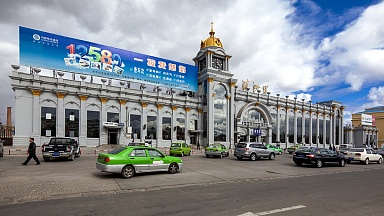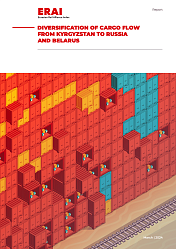National and international context of Russian non-resource exports
In terms of Russia’s ability to realise its export potential, the current situation is ambivalent: on the one hand, numerous trade and economic barriers and unstable situation on the energy and mineral markets prevent the forecasting of relatively steady volumes of Russian exports. On the other hand, external restrictions on the part of the Western countries, which catalysed the development of our own technologies and the search for alternative markets, stimulated enterprises to take stock of their capabilities and to take a broader look at every foreign market without exception.
The push by Russian enterprises of various sizes to carry out their export strategies was also facilitated by the development of national support institutions, primarily, what is known as non-resource non-energy exports (NRE) under the auspices of the ongoing national project, International Cooperation and Export, including system-wide measures to support exporters provided by the Ministry of Industry and Trade, the Ministry of Agriculture, Agroexport (the Federal Centre for Promoting Agricultural Exports of the Russian Ministry of Agriculture), as well as the infrastructure of the Russian Export Centre (the state-run institution to support non-resource exports, including Eximbank of Russia, EXIAR insurance agency, and Export School operated by Russian Export Centre). The creation and active work within the REC Group of My Export electronic platform as a one-stop shop for exporters represents an important area of focus.
All of the above measures are designed to fulfil the task set in the Presidential Executive Order «On national development goals of the Russian Federation for the period up to 2030» to ensure real growth of non-resource non-energy exports by at least 70 percent compared to 2020. At the same time, the number of internal and external challenges that affect the chances for the Russian enterprises to enter international markets is constantly growing.
According to Kommersant with reference to the Ministry of Industry and Trade, «amid the drop in overall Russian exports in 2023 (-28.3 percent, from $592.5 billion to $425.1 billion), the share of non-energy exports increased from 28 percent to 35 percent compared to 2014. The fall in overall exports, which was more pronounced than in the NRE exports, was caused by lower oil prices and forced reorientation of shipments from the European market to the Asian market. After Europe imposed embargo on Russian petroleum and petroleum product imports (and tightened restrictions on a number of other goods), Russia’s exports to Europe fell from $265.6 billion to $84.9 billion (-68 percent). Higher exports to Asia were in no position to compensate for that decline − supplies increased by 5.6 percent, from $290.4 bn to $306.6 bn. Now, greater exports to «friendly» countries will be needed to expand supplies. In late 2023, the Ministry of Industry and Trade reported that the volume of NRE to Türkiye increased by 36 percent, China 26 percent, Egypt 57 percent, Brazil 37 percent, and Saudi Arabia 87 percent. When assessing Russian exports statistics from a quantitative and qualitative point of view, it is also important to take into account the end destination of Russian exports, since many countries, for example, in the Middle East and Africa region (MENA) are trade and logistics hubs, which represent a transition point from which Russian exports are shipped to third countries.
Author: Sofia Rekord




